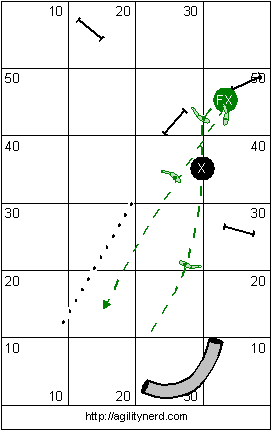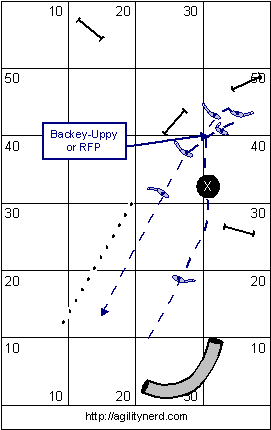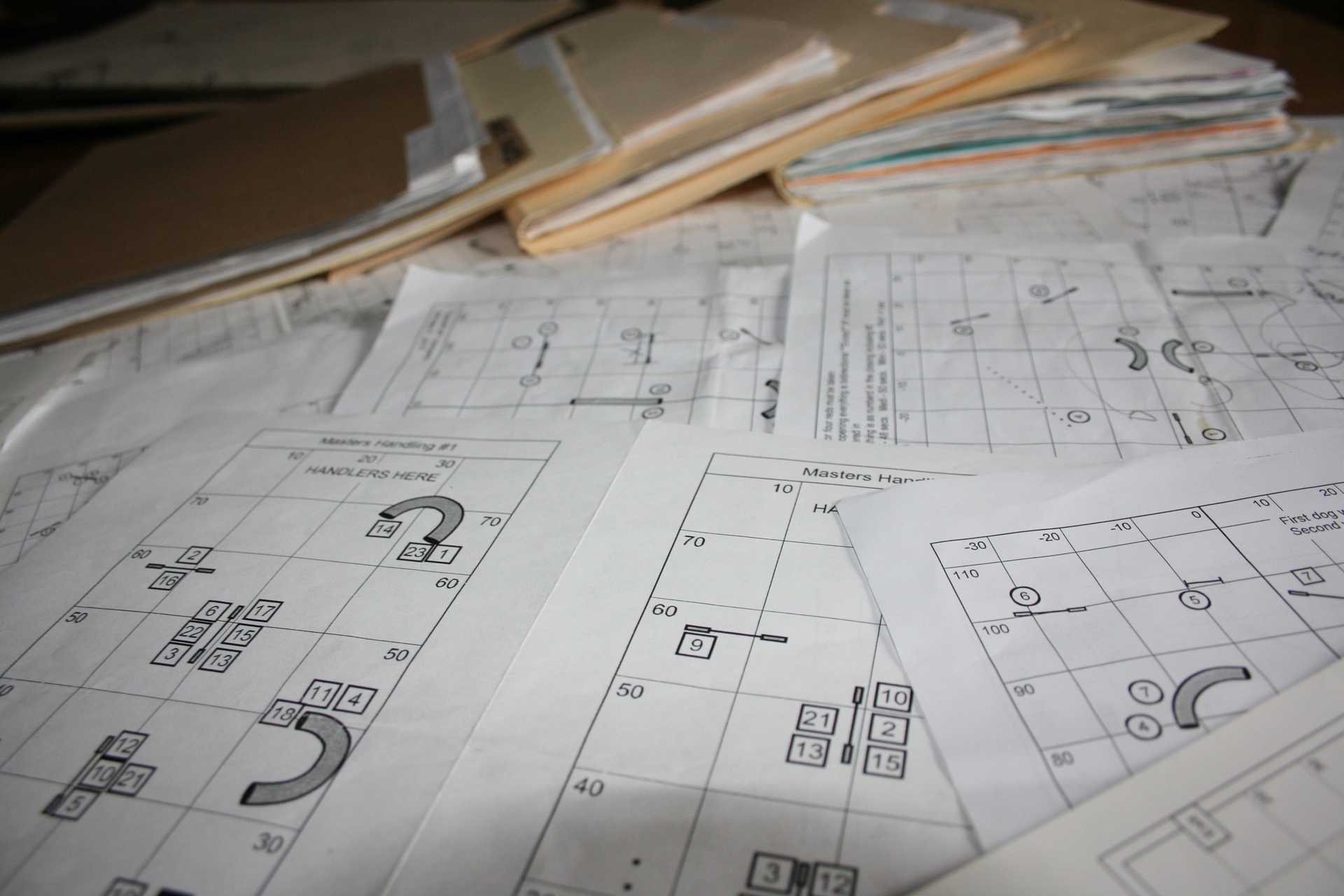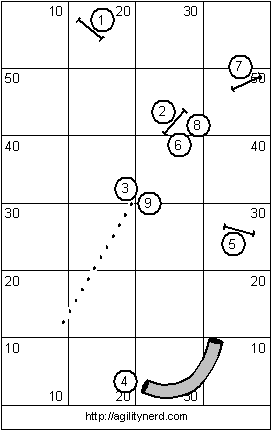Dana Pike Advanced Class Sequence - Weave Entries
06 Mar 2008
Dana Pike had another great course this past week; I liked it because it had an interesting and challenging sequence leading up to the weave pole entrance. I've pulled it "out of context" and added obstacles 1, 2 and 3 to get you into position for the part I liked best. Cut out this way you can set it up in a smaller space than a full course.Don’t pay strict attention to the dimensions in the diagram, they are rough estimates from my memory. Here’s how you should set it up. The distance from jump 8 to the weaves should require that your dog collect to make the Weave Entry. To make the sequence more interesting the distance from the tunnel to jump 5 should make it a real stretch for you to properly execute a Front Cross Learning the Front Cross - VideoFront Cross between jumps 5 and 6. If you do those two things you’ll have set up the course as Dana did for us. See the final section of this article for some ideas on changing the jump rotations.
Handling Options
Here’s a quick run down of some handling options. For the opening you can Lateral Lead Out to the landing side of jump 2 and you dog will collect as it turns in to you and should enter the weaves without a problem. Otherwise you run with your dog on your left and Front Cross at the location of the Lateral Lead Out. A Rear Cross Learning the Rear CrossRear Cross on the take off to jump 2 and then Rear Cross the entrance of the weaves (with tight jump to weave spacing some dogs will require the handler pause as they approach the weaves to make sure they aren’t pushed past the entrance). A final alternative is Rear Cross 1-2 and Front Cross on the exit of the weave poles.
If handling the weaves with the dog on your right, then if you have independent weaves you can fade toward the tunnel a little. Once your dog is committed to the tunnel you can run to get a Front Cross between jumps 5 and 6 (as shown by the X in the diagrams below). If you can’t get in position for the Front Cross then a Rear Cross between jumps works just as well.
Sequence 6-7-8-9 is a nice little drill. It is a 180 blending into a Serpentine Serpentine Handling TechniquesSerpentine Sequence with the weaves as the final Serpentine obstacle. The layout of the obstacles and the handler’s approach into the 180 pretty much requires that the sequence be handled entirely with the weaves on the handler’s right side.
The cross (Front or Rear) between 5 and 6 turns the dog over jump 6. The turn over jump 7 is a Jump Wrap Jump Wrap Handling TipsJump Wrap Handling - With VideoJump Wrap/Wrap which is best handled as Front Cross wrap so you pick up the dog on your right hand as they come over the jump.
At this point there are two primary handling methods (shown below) for getting your dog into the weaves. The one I was successful with Meeker is shown on the left. I just turned and moved with him on my right, sent him over the jump and slowed sharply to cue collection into the weaves. With Milo that method didn’t work as well because as soon as I turned toward jump 8 he took the jump in full extension and ended up at the second weave pole every time. So for him I used the method shown on the right below. Once he came over jump 7 I stayed facing jump 7, extended my left arm and moved backward to the take off of jump 8. Milo reads this backey-uppy correctly as a jump wrap (see Single Sided Threadle Handling to see this in action) so he took jump 8 collected. I then turned to my left and he turned back to the weave poles.


Another approach noted (but not shown) in the right figure above is to use just enough of an RFP or False Turn after jump 8 to get your dog to check in and not miss the weave entry.
Alternate Layouts
To change the difficulty of the exercise not only can you change the distance from the weaves to the jumps, you can also change the angle of jumps 6/8 and 7 in relation to the weaves. The diagram below shows some options in red and green.
Alternate Weave Entry Jump Locations

If you are interested in more weave pole entries you might want to play with this sequence too.
If you enjoyed this article won't you please:  Thanks!
Thanks!

